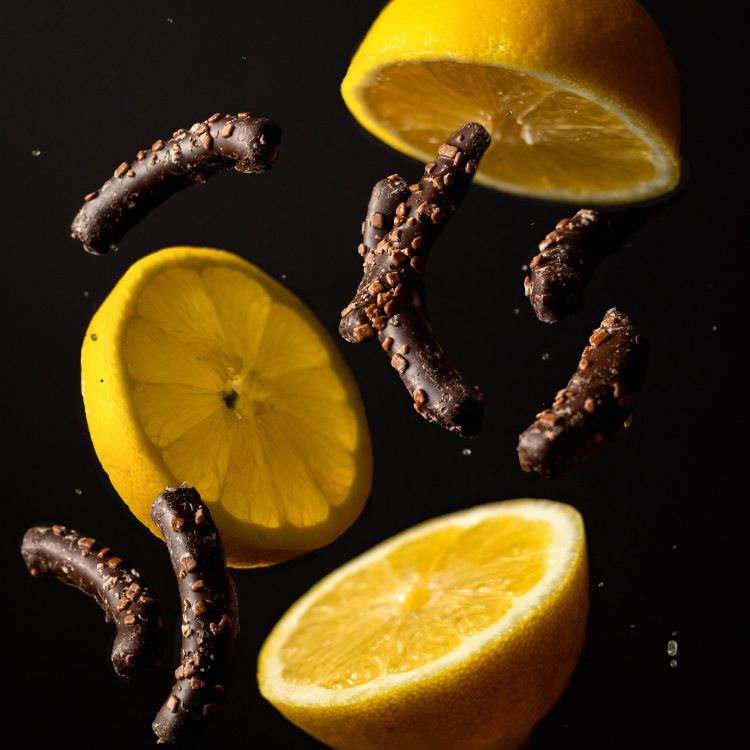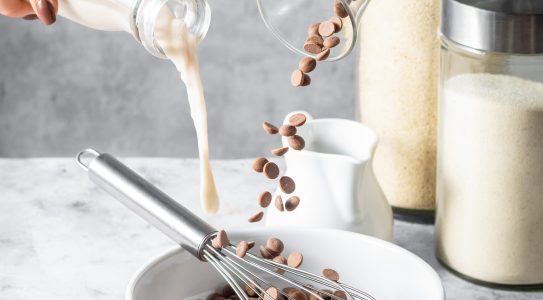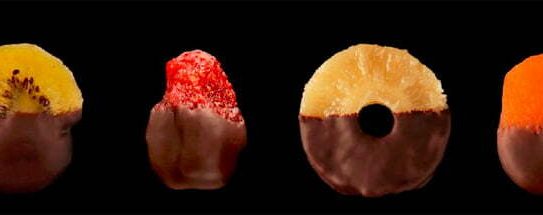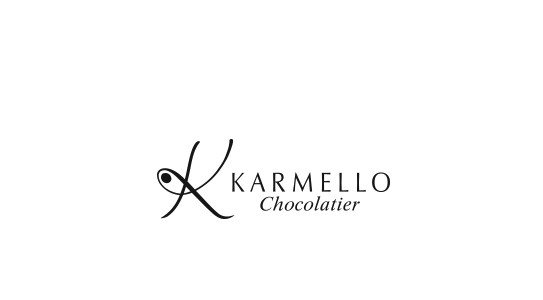The history of chocolate
The history of chocolate, leading from the bitter xocoatl to the delicate sweetness of truffle pralines, is a path that spans approximately three thousand years of world culture. It represents more than just the history of a food product. It reflects cultural development over the centuries and is also a testament to a fascinating history.
It all began around a thousand years before Christ. There is evidence of the existence of cocoa beans in human life during the heyday of Indian cultures, such as scenes depicted in paintings or cocoa processing tools.
The first version of the word cocoa was found by linguists in the Olmec language, a tribe that lived in the Gulf of Mexico around 1000 BC. The cocoa beans were treated with great fascination by them, as they believed they were a gift to humans from the god Quetzalcoatl.
The next peoples who inhabited these lands possessed an extraordinary gift – the cultivation of cocoa. The Mayan civilization used it as a means of payment and traded its fruits. Only the higher social classes could afford to consume cocoa in the form of a thick liquid seasoned with chili and pepper. For the Aztecs, it was a sacred drink used during religious ceremonies. At the court of Montezuma, the last king of this civilization, reportedly a thousand tons of cocoa beans were found at the time of the conquest of Mexico by the Spaniards, even though the ruler did not possess any cultivation lands during that period. He obtained them through tribute from subjugated tribes. The king himself consumed up to forty servings of the invigorating drink per day.
Europe learned about the cocoa tree during Christopher Columbus’ expedition, in which he attacked one of the Mayan ships. However, he did not discover the exquisite taste of chocolate. It was not until 1528 that Hernan Cortez obtained the recipe for xocoatl – a beverage made from crushed cocoa beans and water – at the court of the Mexican ruler Montezuma II. Over time, vanilla, honey, sugar, and other spices were added to the drink. The Spanish conquistadors appreciated the invigorating effects of cocoa and, following the example of the local warriors, began to carry a paste made from dried beans that had a strengthening effect.
Due to its growing popularity, cocoa became the object of interest for many colonial powers. Nevertheless, the Spaniards managed to maintain a trade monopoly for almost a hundred years. In later years, Portugal, England, and the Netherlands also secured territories for the cultivation of precious cocoa.
The spread of chocolate in France is owed to Louis XIV, who introduced the habit of drinking this beverage in royal courts and among the aristocracy. It is said that he supported the construction of the first steam-powered machines for chocolate production. As the lifestyle of the king was imitated by many European rulers, the custom of drinking this beverage soon reached England, the Netherlands, Germany, and Switzerland.
Chocolate as a beverage became almost universally accessible in the 17th century when it could be tasted in coffeehouses that emerged during this period.
In contrast to coffee and tea, the process of cocoa production was extremely complicated. The high fat content was also a problem, as it led to rapid spoilage of the finished product. Due to these issues, cocoa remained an exclusive commodity.
In the early 19th century, Coeraad van Houten invented a press for removing fat from the beans, which allowed him to obtain pure cocoa butter. Blocks were made from this butter, which were ground to obtain cocoa powder. Solid chocolate appeared for the first time in 1849.
Due to its continuously growing popularity, Kakao became a subject of interest for many colonial powers. However, for almost a hundred years, the Spaniards managed to maintain a trade monopoly. Later, Portugal, England, and the Netherlands also gained territories for growing the precious cocoa beans.
The spread of chocolate in France is owed to Louis XIV, who introduced the custom of consuming this drink at royal courts and among the aristocracy. He reportedly supported the construction of the first steam-powered machines for chocolate production. As the king’s lifestyle was emulated by many European rulers, the custom of drinking this beverage soon spread to England, the Netherlands, Germany, and Switzerland.
Chocolate as a drink became almost universally available in the 17th century, when it could be tasted in the emerging coffeehouses of the time.
In contrast to coffee and tea, the cocoa production process was extremely complex. The high fat content was also a problem as it contributed to the rapid spoilage of the finished product. Because of these issues, cocoa remained an exclusive commodity.
In the early 19th century, Coeraad van Houten invented a press to remove the fat from the beans, which enabled him to obtain pure cocoa butter. Blocks were made from it, which were ground to obtain cocoa powder. Solid chocolate appeared for the first time in 1849.
In the mid-19th century, famous chocolate-making companies were established. In 1875, condensed milk was added to chocolate for the first time, and milk chocolate was obtained. At the same time, the technology for producing soluble chocolate was developed.
Currently, cocoa grows in Africa, tropical parts of both Americas, the Far East, and the West Indies.
After being harvested, cocoa beans are left in the sun to develop their characteristic aroma. The shells are then removed, and the edible part is processed into cocoa mass and cocoa butter. Further processing allows for the production of various types of chocolate.
In addition to large chocolate factories, there are small artisanal chocolate makers who complement the market with their exquisite products. Thanks to their quick response to changes in chocolate fashion, they continue to provide connoisseurs with unique experiences.



